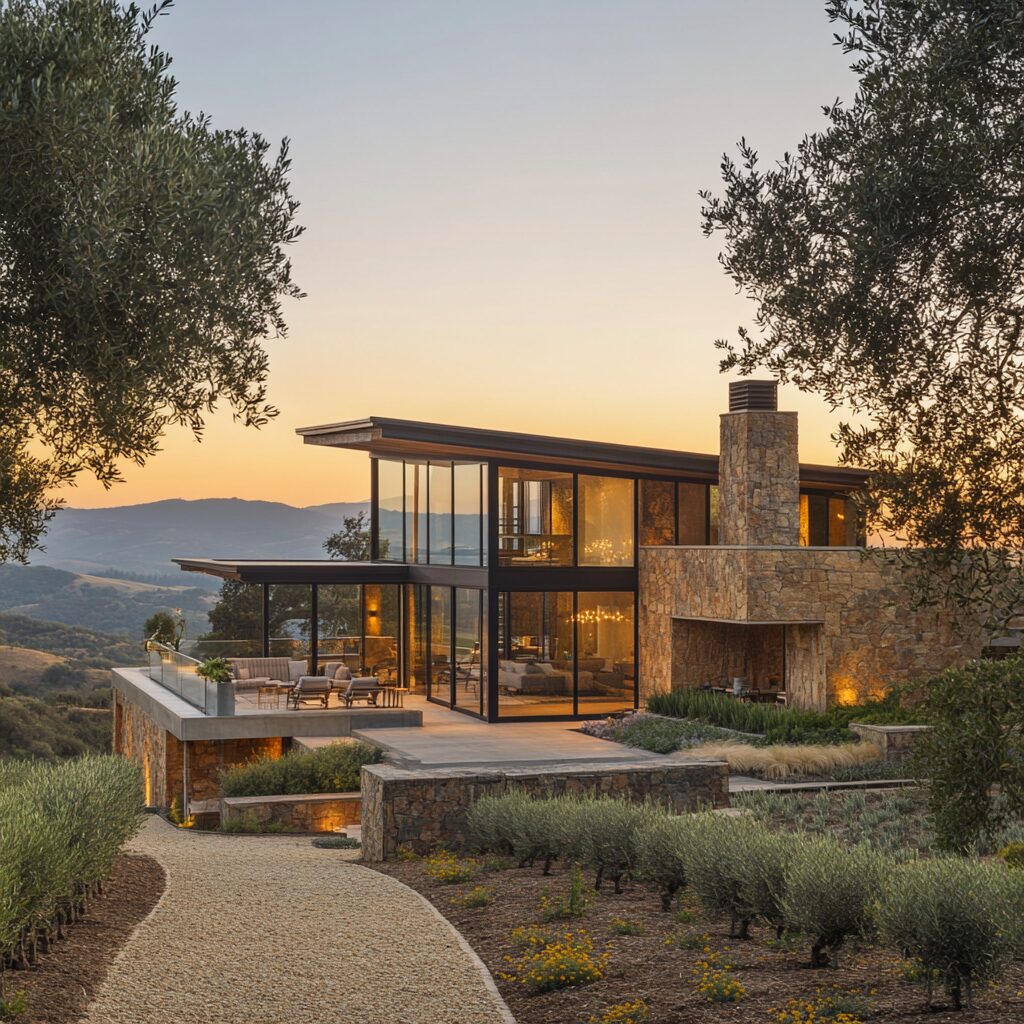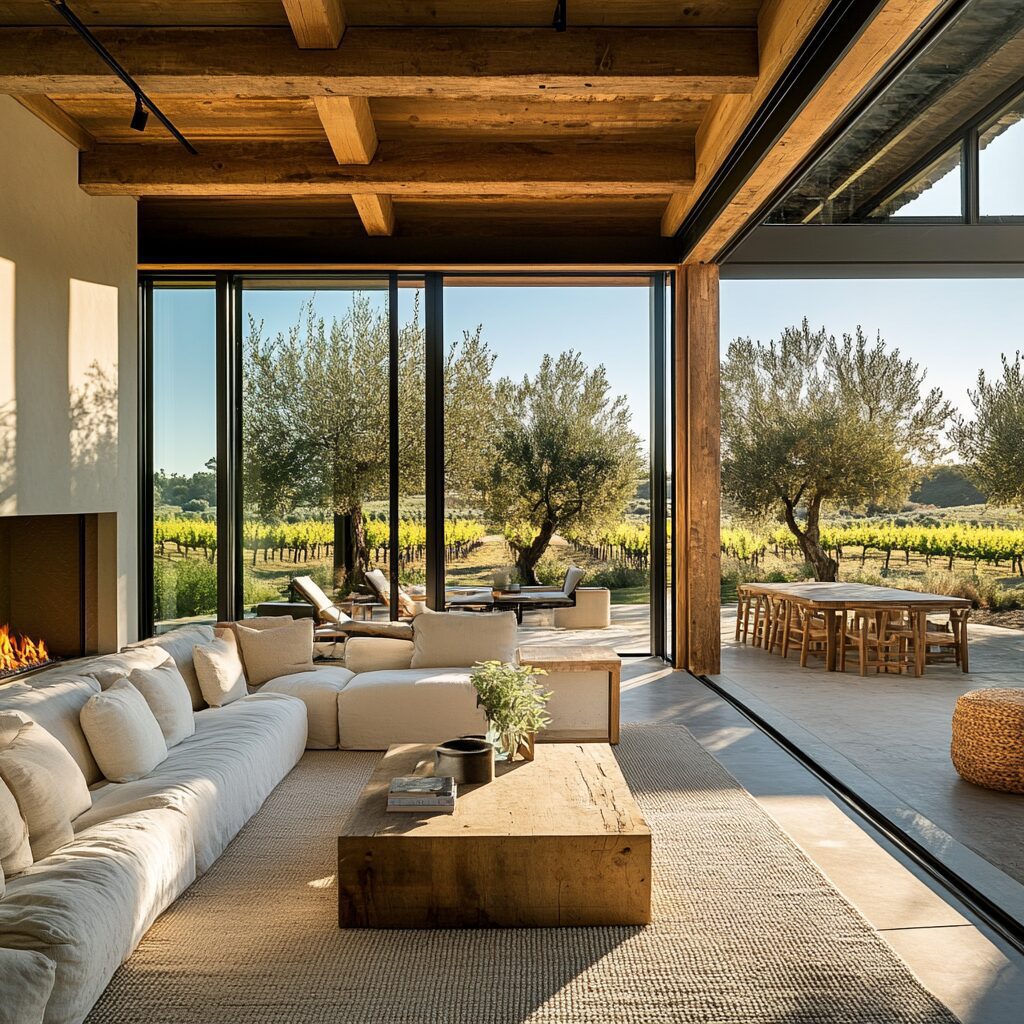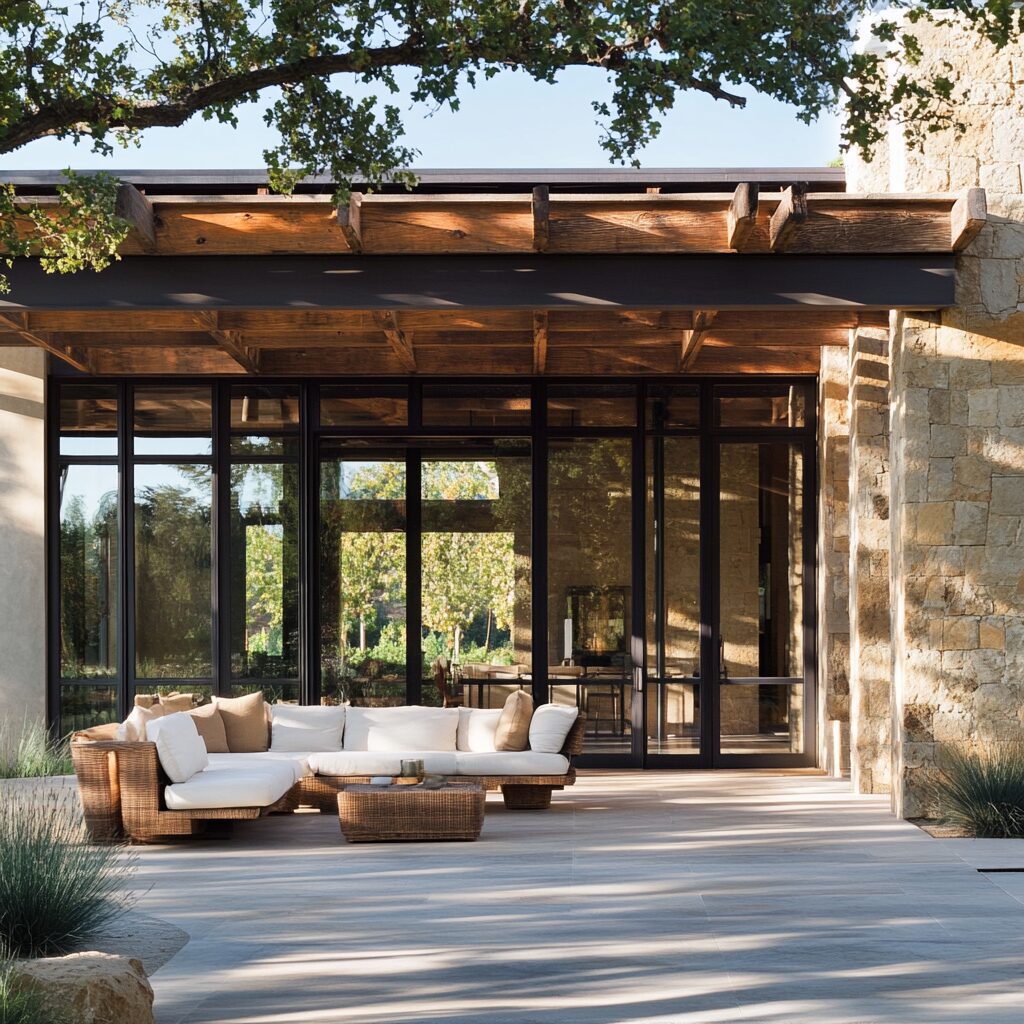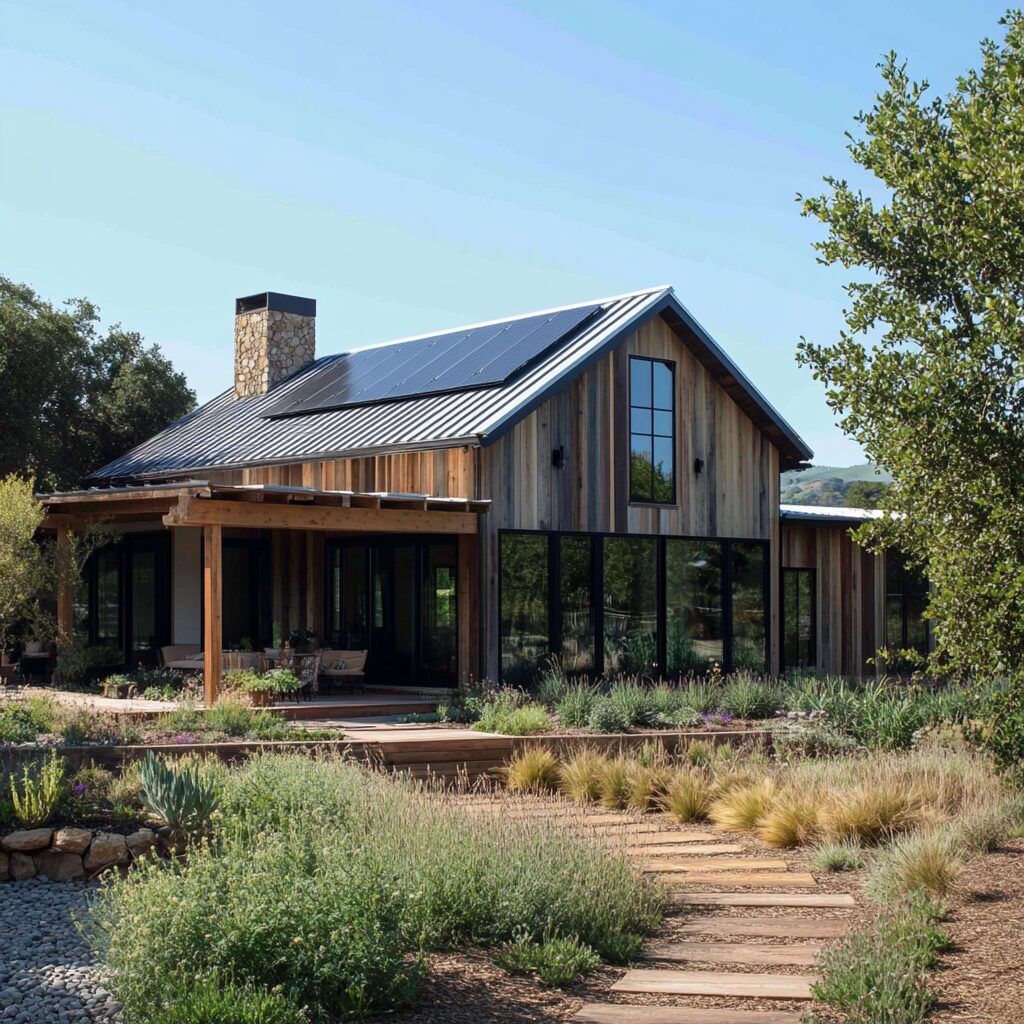Wine Country isn’t just a beautiful place—it’s a way of life. The vineyards, rolling hills, and golden light create a landscape that feels almost cinematic, but what really makes it special is how people live here. Mornings start with coffee on a sun-drenched patio, afternoons are spent with doors wide open to the breeze, and evenings often end around a firepit with a glass of wine in hand.
The best wine country homes don’t just sit on the land; they belong to it. Whether you’re building from the ground up or remodeling an existing home, architecture here should feel natural, effortless, and deeply connected to the surroundings. Here’s how we design vineyard homes that truly embrace wine country living.

1. Work With the Land, Not Against It
One of the biggest mistakes we see in custom home design is trying to force a structure onto the land instead of designing around it. The beauty of wine country comes from its rolling topography, mature trees, and vineyard landscapes—so why flatten it all out with heavy-handed sitework?
We always start by reading the site. Where does the best light come from? How does the wind move through the property? Where are the best views? These natural cues inform how we position a wine country home, where we place windows and outdoor spaces, and even what materials make the most sense.
Smart Site Planning
- Maximizing Views – A well-placed window can turn a living room into a frame for the landscape. We design homes to capture the best sightlines—whether that’s a vineyard in the distance or an old oak tree that deserves to be the focal point.
- Minimizing Impact – Instead of excessive excavation, we work with the land’s natural contours. Split-level designs, terraced patios, and gently sloped driveways help homes feel like they naturally belong to the site.
- Microclimates Matter – The climate can shift dramatically from one spot to another. We pay attention to natural wind patterns, sun exposure, and shaded areas to design comfortable outdoor spaces that can be enjoyed year-round.

2. Wine Country Architecture Brings the Outdoors In (and Vice Versa)
Indoor-outdoor living isn’t just a trend with vineyard homes—it’s a way of life. The climate here practically begs for homes that open up to the landscape, blurring the lines between inside and out.
Key Design Elements for Seamless Indoor-Outdoor Living:
- Expansive Glass Openings – Pocket doors, sliding walls, and oversized windows let the landscape become part of the architecture.
- Outdoor Rooms – Covered patios, pergolas, and courtyards make outdoor spaces feel as intentional as indoor ones.
- Natural Ventilation – Thoughtful placement of windows and doors encourages cross breezes, reducing the need for mechanical cooling.
A great example? Many of our clients love the idea of a kitchen that opens directly onto a patio, making it easy to transition from cooking inside to dining outdoors. Even something as simple as a pass-through window from the kitchen to an outdoor bar can make a huge difference in how a space is used.

3. Use Materials That Feel Like They Belong
A wine country home should feel warm, natural, and rooted in its surroundings. That starts with materials. We tend to lean toward textures that age gracefully—materials that get better over time instead of feeling too polished or perfect.
What Works Best For A Vineyard Home?
- Reclaimed & Natural Wood – Perfect for exposed beams, ceilings, and siding. Oak, cedar, and Douglas fir give a home warmth and character.
- Local Stone & Stucco – Aged stone walls, hand-troweled plaster, and limewash finishes create that timeless, organic feel.
- Weathered Metal – Corten steel, copper, and blackened steel add modern contrast while developing a patina that blends with the landscape.
By choosing materials that echo the tones and textures of the natural surroundings, a home feels like it truly belongs to the land, rather than just sitting on top of it.

4. Design for Sustainability Without Overcomplicating It
Sustainability isn’t just about checking boxes—it’s about designing homes that naturally stay comfortable, use less energy, and take advantage of the climate. Some of the best sustainable strategies are also the simplest.
Passive Design Strategies For Wine Country Homes:
- Deep Overhangs & Shading – Keeps interiors cool in summer while allowing low winter sun to warm the space.
- Thermal Mass – Materials like stone and concrete absorb heat during the day and release it at night, helping to regulate temperature naturally.
- Drought-Resistant Landscaping – Native plants, gravel paths, and rainwater collection systems help conserve water without sacrificing beauty.
And of course, many homeowners in the wine country integrate solar panels, battery storage, and high-efficiency HVAC systems to further reduce their environmental impact. But the foundation of a sustainable vineyard home starts with smart & strategic design choices, not just technology.

5. Respect the Vineyard
If you’re lucky enough to be building near or within a vineyard, the architecture should complement—not compete with—the vines. That means being mindful of sightlines, keeping a low profile, and using materials that don’t distract from the beauty of the landscape.
Key Considerations for Vineyard Homes:
- Minimize Visual Impact – Lower rooflines, earthy colors, and landscape-integrated design help homes blend into their surroundings.
- Consider Vineyard Operations – If the property is an active vineyard, we factor in accessibility for farm equipment, seasonal workflows, and dust control near living areas.
- Frame the Landscape – Instead of just dropping a house in the middle of the vineyard, we design with the vines in mind—creating courtyards, terraces, and patios that highlight the landscape instead of blocking it.
Create a Wine Country Home that feels perfect
At the end of the day, the best vineyard home doesn’t just look beautiful—it feels right. They connect to the land, embrace the outdoors, and create spaces that are meant to be lived in, not just admired.
At RG/Architecture, we’re a luxury architecture firm that specializes in designing custom homes and remodels that fit seamlessly into the wine country lifestyle. If you’re looking to build or renovate a wine country home, we’d love to help bring your vision to life. Let’s create a unique home that feels like it truly belongs!
